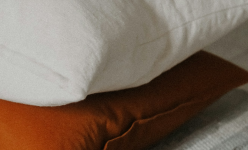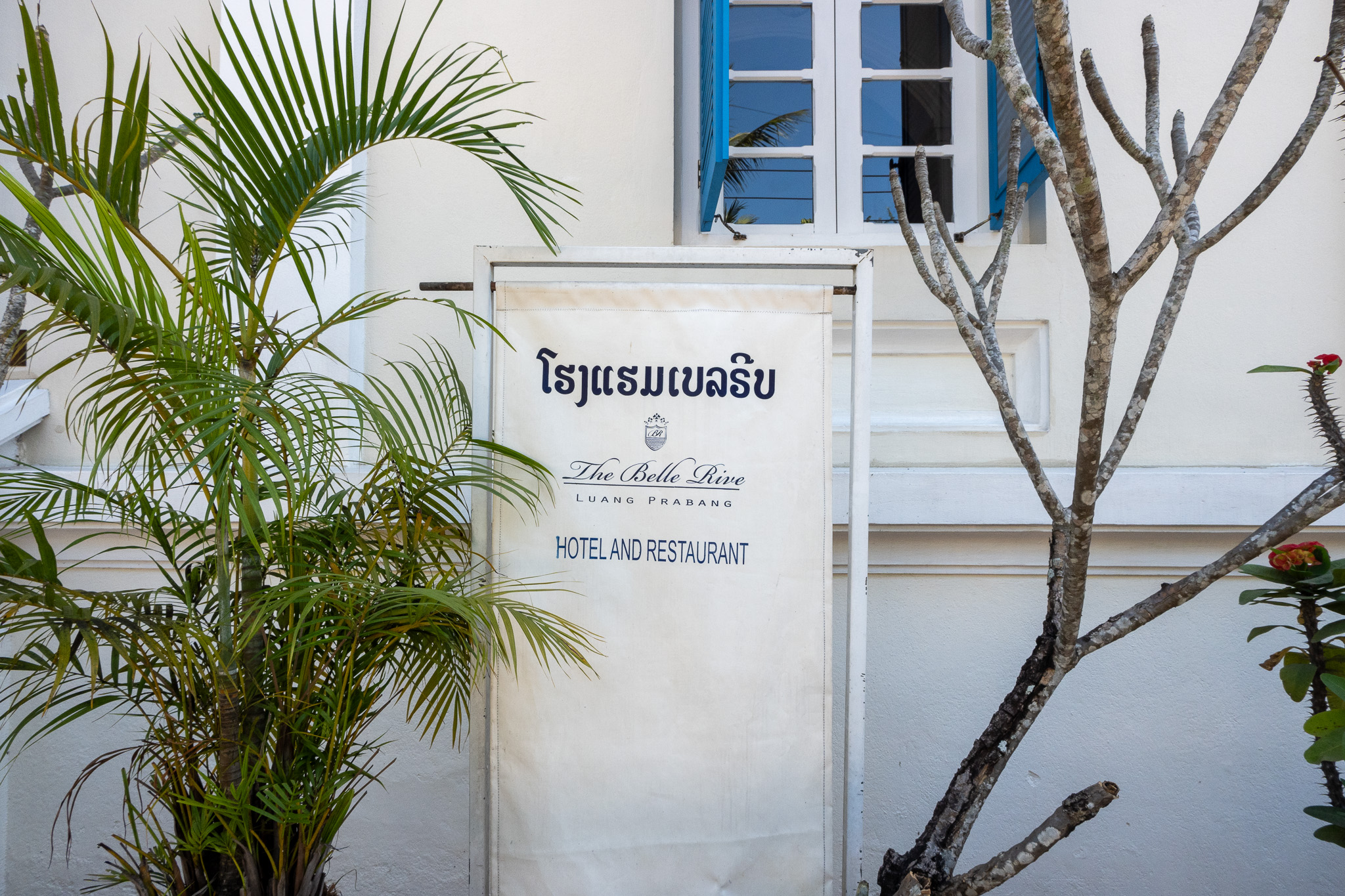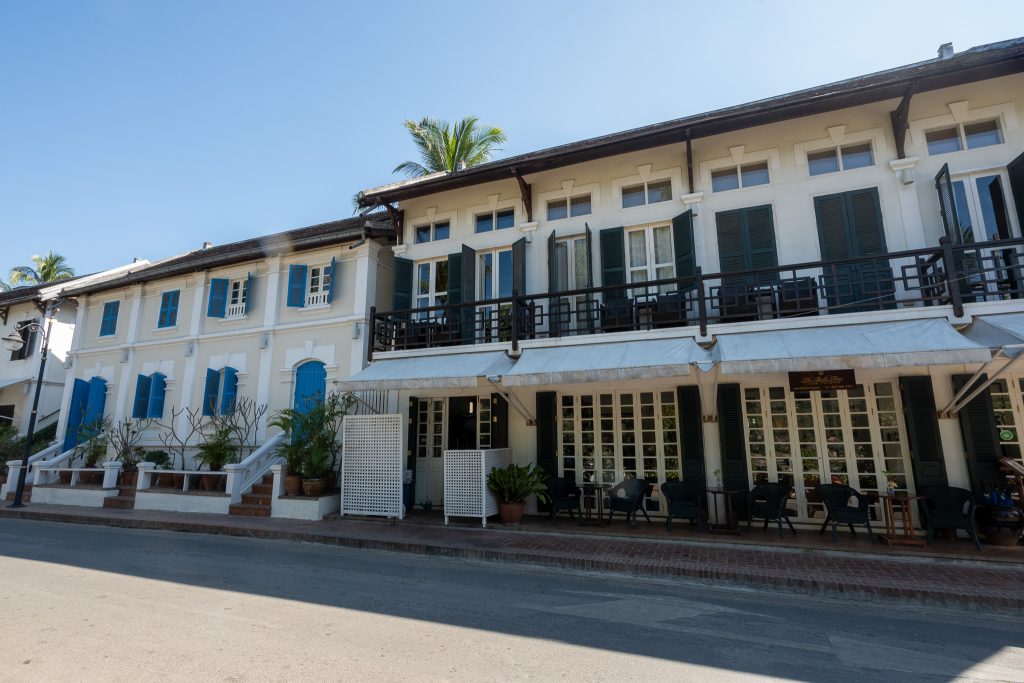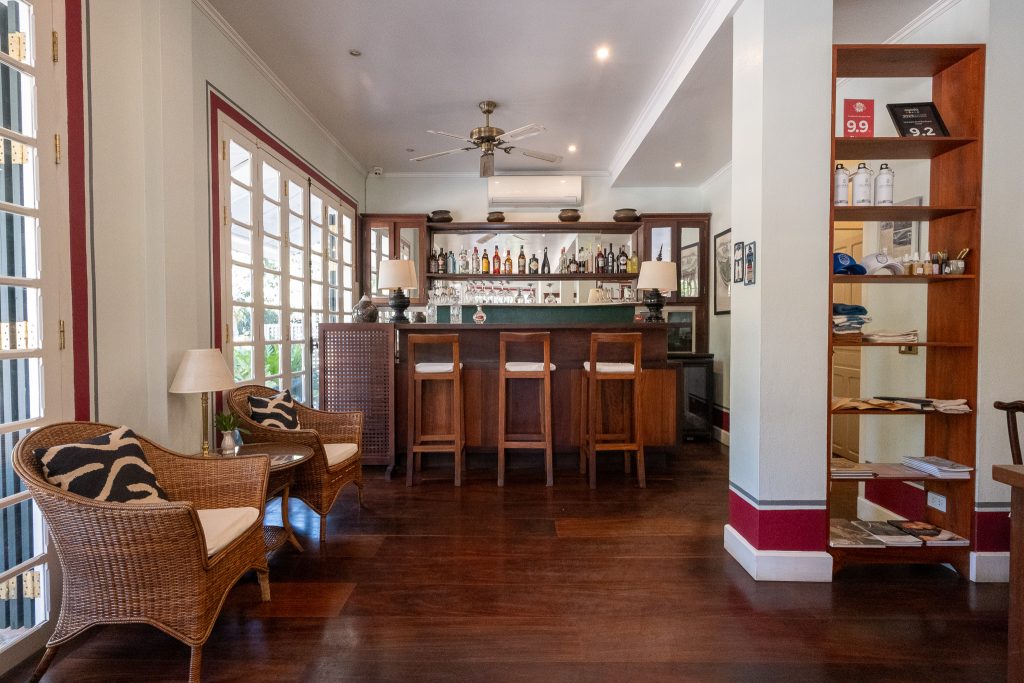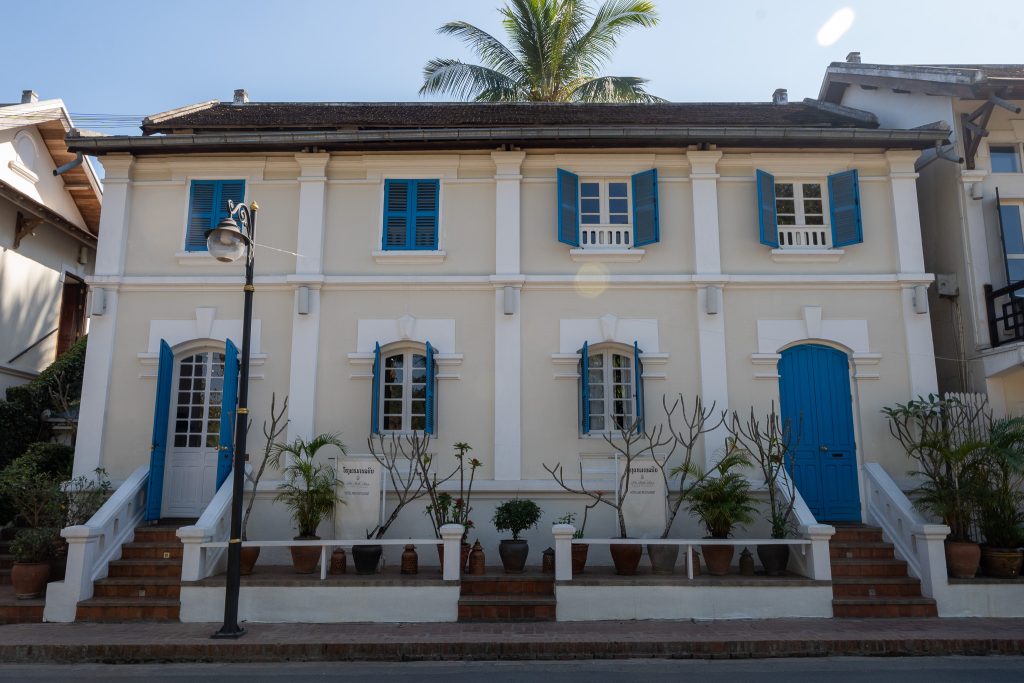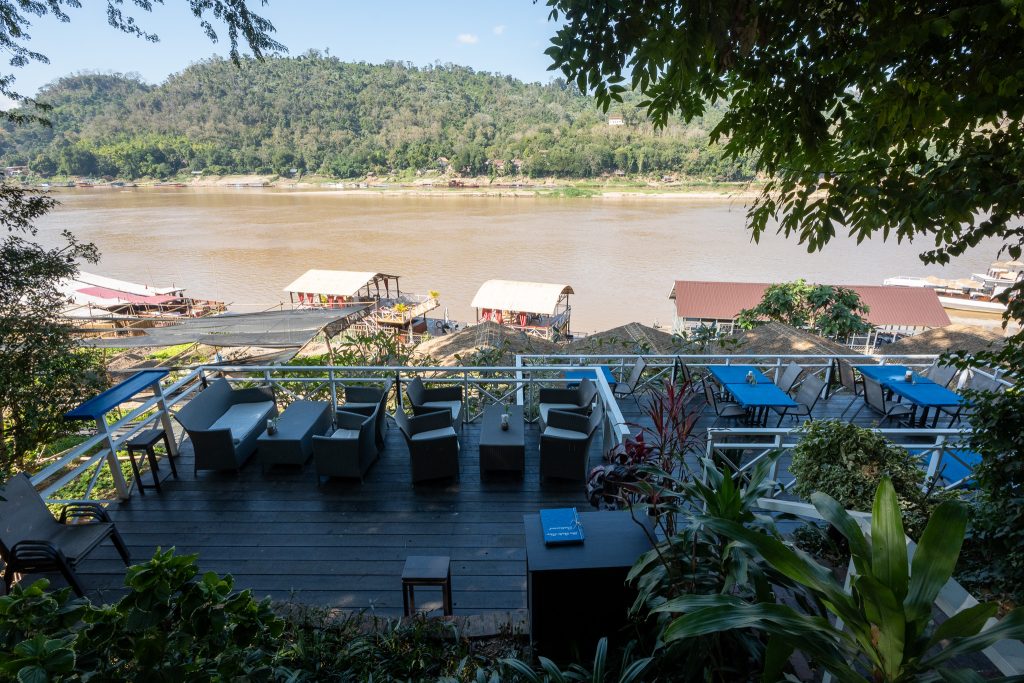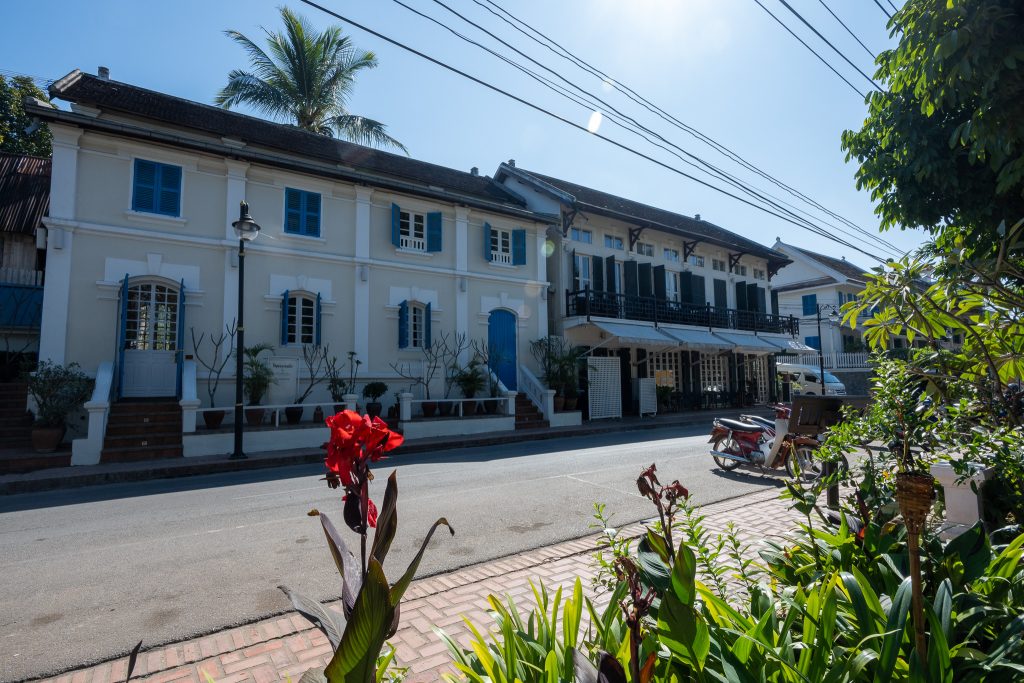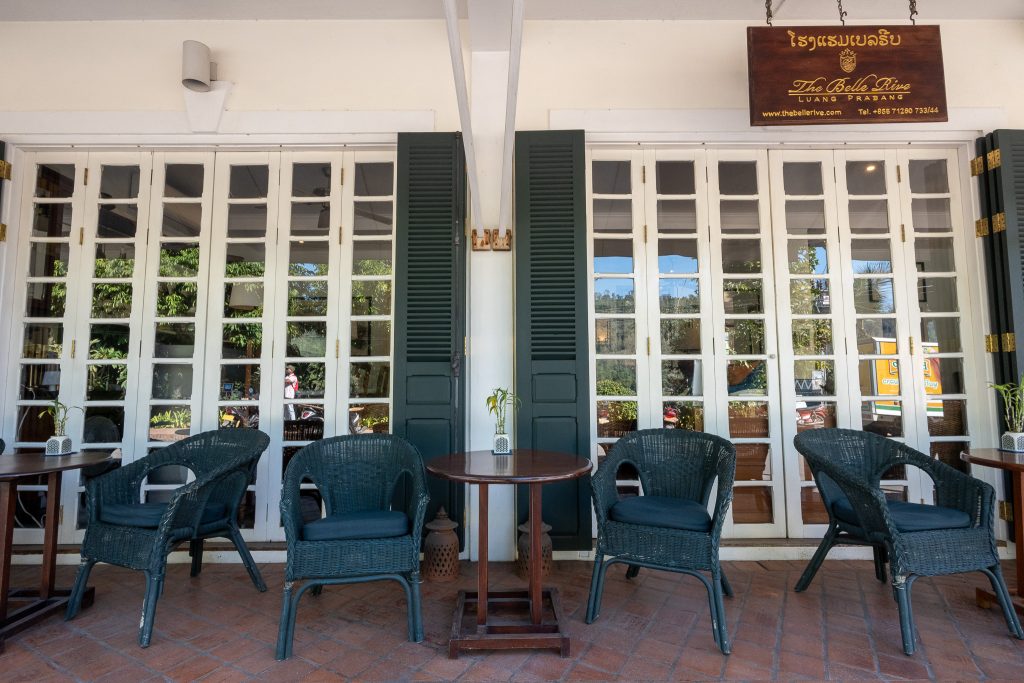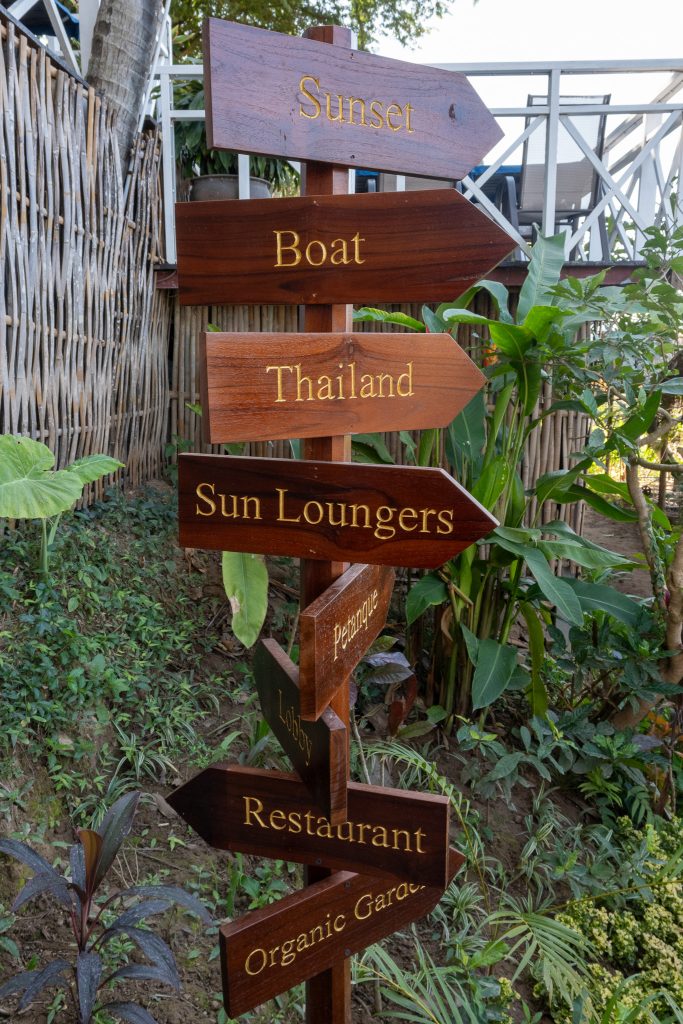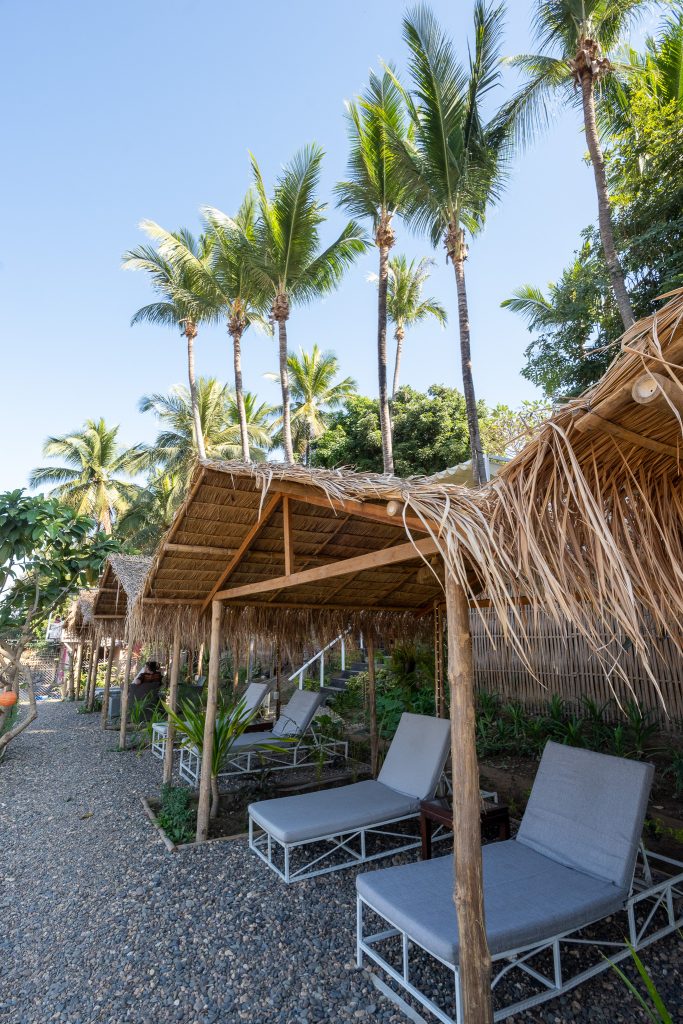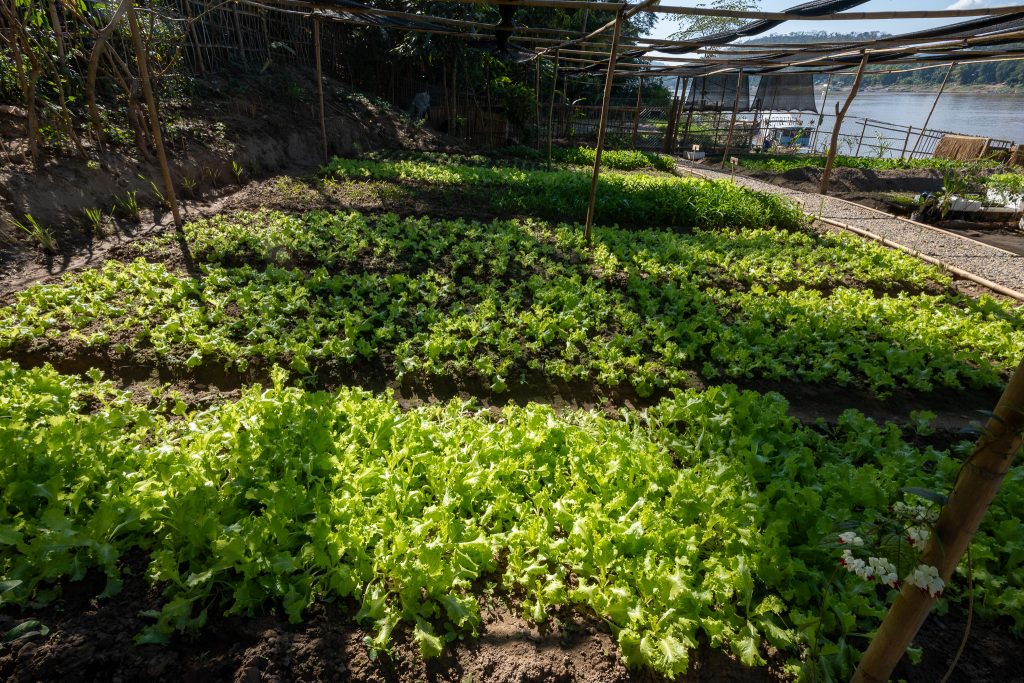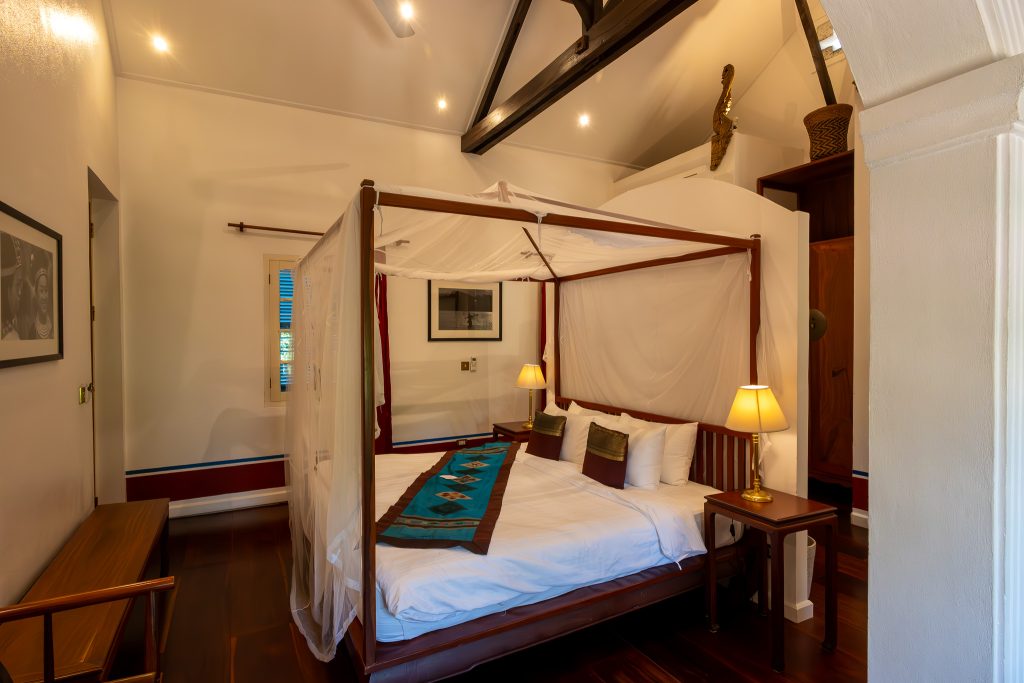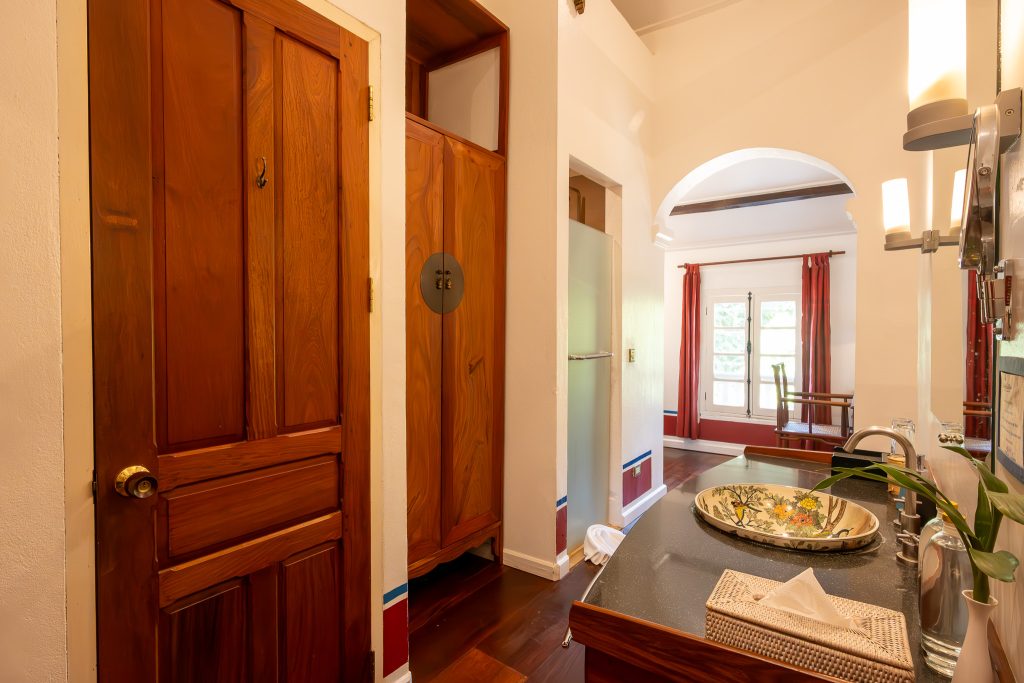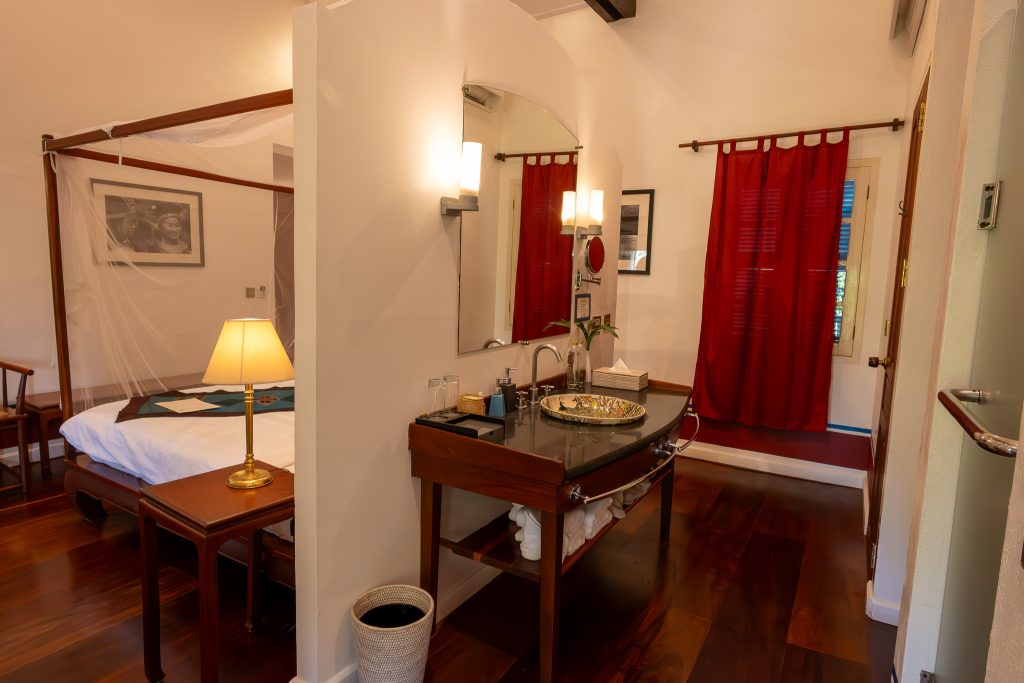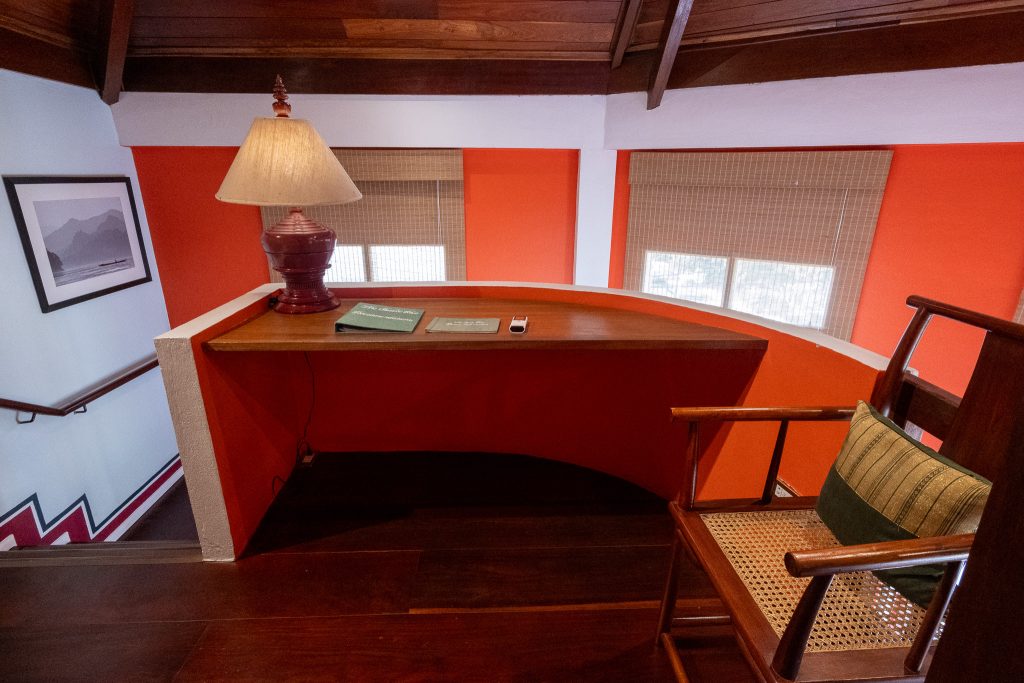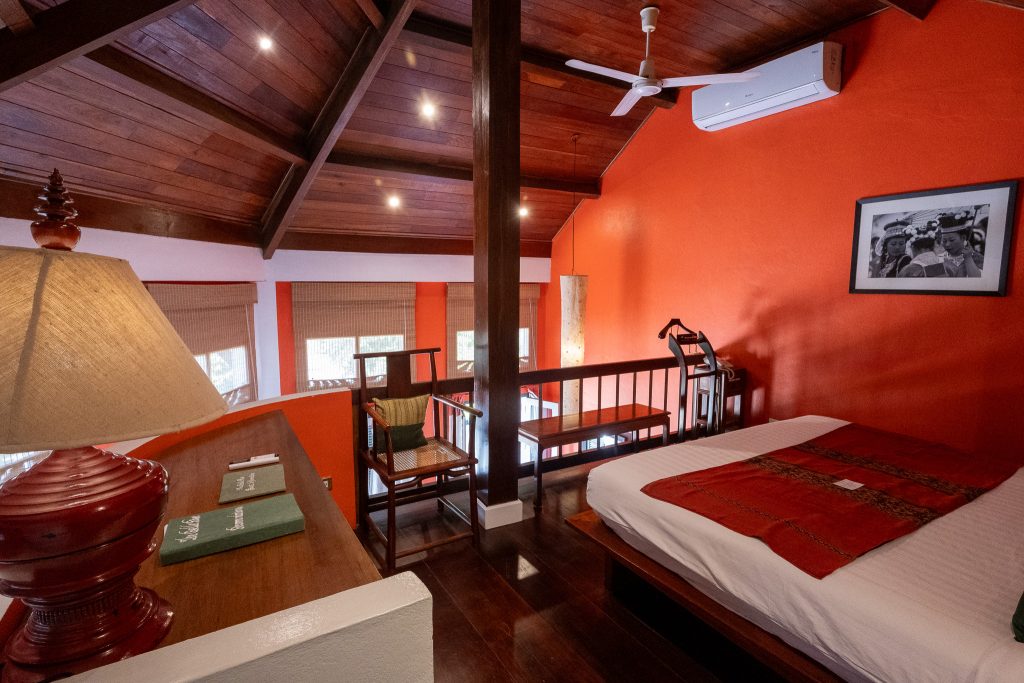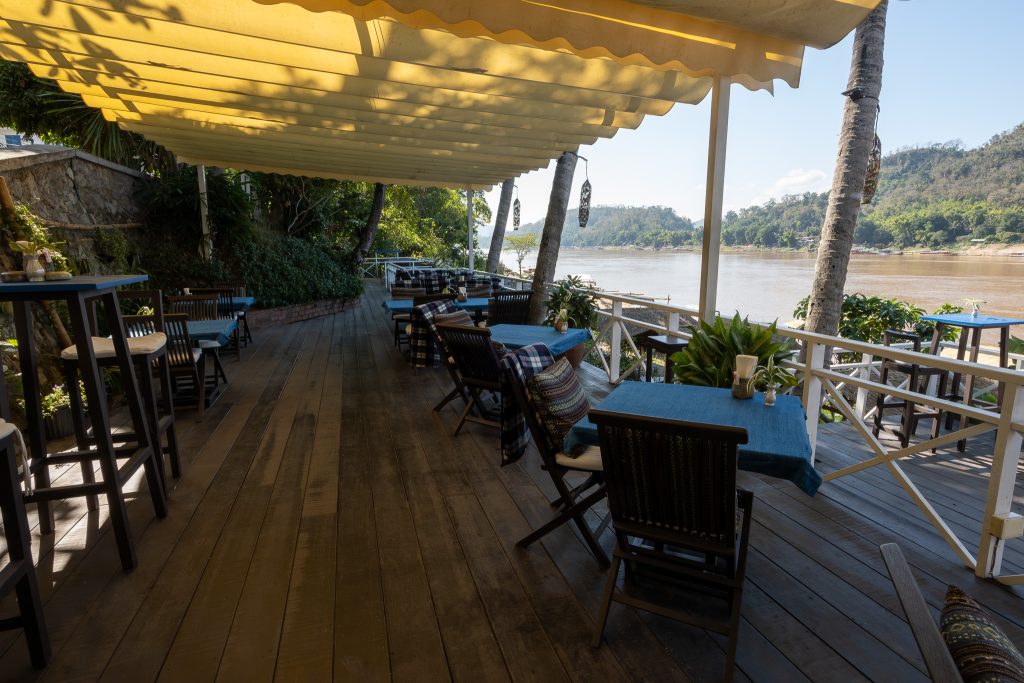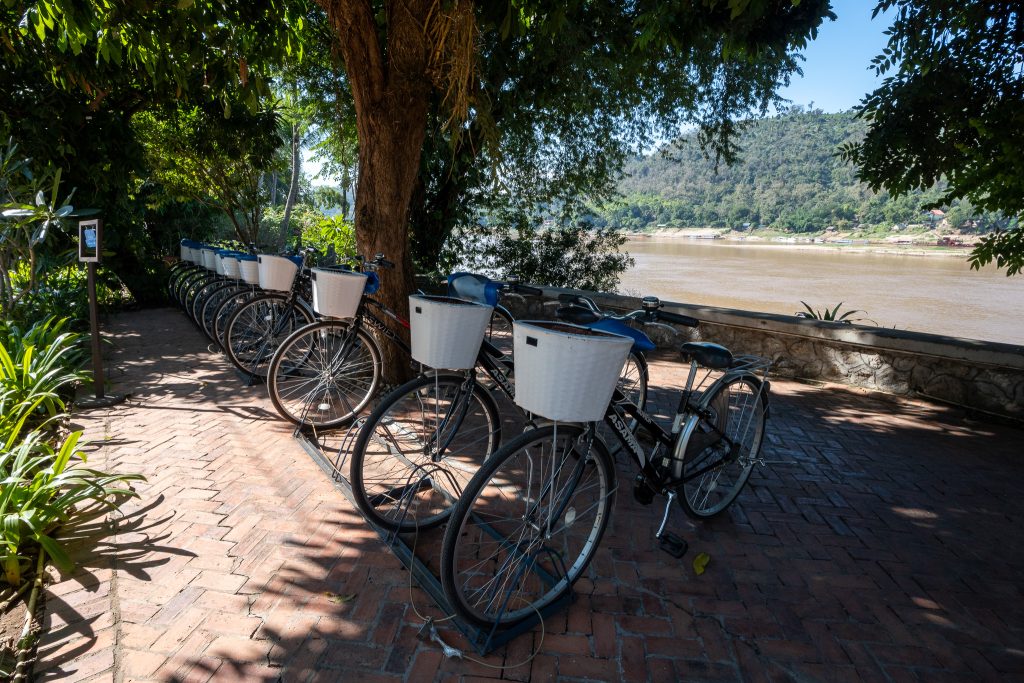The Belle Rive Boutique Hotel – Luang Prabang, Laos
Arrival: Stepping Into a Living Postcard
The first glimpse of The Belle Rive stopped me in my tracks. Framed by towering tamarind trees, the hotel’s ivory façade with its signature cobalt shutters looked like an illustration from a 1920s travel journal—the kind where writers described Indochine with ink-stained romanticism. My taxi (arranged seamlessly by the hotel) pulled up to the unassuming entrance just as the afternoon sun gilded the Mekong’s surface, making the scene shimmer like a mirage.
Check-in was a masterclass in understated hospitality. No marble-clad lobbies or queues here—just a petite reception area where I was greeted with a chilled lemongrass cordial and a cold towel infused with plai (a local ginger variety). As the manager handed me an old-fashioned brass key (they’ve since added digital locks, but keep these beauties for ambiance), I noticed the walls were lined with black-and-white photos of Luang Prabang’s river life through the decades. It was my first hint that this hotel doesn’t just occupy space in the city—it curates its living memory.
Grounds: Where Architecture and Nature Waltz
Spread across several heritage buildings connected by brick pathways, the property feels like a secret garden with the Mekong as its centerpiece. The main lawn—dotted with century-old frangipanis and vintage ironwork benches—slopes gently toward the riverbank, where longtail boats bob like resting water birds. At dawn, mist curls off the water as monks in saffron robes collect alms along the nearby streets; by dusk, the same space transforms into a front-row seat for nature’s nightly firework show of sunsets.
What struck me most was how the landscaping respects Luang Prabang’s UNESCO-protected aesthetic. Instead of manicured hedges, there are clumps of wild lemongrass and butterfly pea vines. My favorite discovery? The hidden reading nook beneath a 150-year-old banyan tree, complete with a swinging daybed and a vintage rotary phone to call for cocktails.
Rooms: Colonial Romance with Lao Soul
My Superior Riverview Room (number 12, for those seeking the perfect balcony) was a masterclass in heritage-inspired design. The moment I turned the brass doorknob, I was greeted by the comforting creak of teak floorboards polished to a warm glow. The vaulted ceilings—original to this 1930s French administrator’s residence—made the space feel grand yet intimate, while the four-poster bed dressed in crisp Belgian linens promised the sort of sleep one writes home about.
The decor walked a perfect tightrope between nostalgia and comfort:
- Walls painted the palest ochre (a hue historically made from local clay)
- Handwoven Lao textiles repurposed as throw pillows
- Antique writing desks where previous guests had left faint pencil marks
- Black-and-white photography of hill tribe communities by a Laotian artist
The absence of a television (available on request) felt like an invitation to engage with the real world beyond the windows. My balcony became a private theater—mornings spent watching fishermen cast nets in the golden light, evenings observing the river’s transformation into a liquid mirror reflecting the stars.
A word about the bathrooms: clad in caramel-hued local stone with rainfall showers, they feature bespoke toiletries scented with champak flower, a nod to the blossoms that perfume Luang Prabang’s streets at dusk.
Dining: A Culinary Love Letter to Laos
The hotel’s restaurant, Mekong Tales, deserves its own Michelin star for views alone. Perched right on the riverbank, its rattan chairs and linen-draped tables seem to float above the water during high season. Executive Chef Vanhsai (a Luang Prabang native trained in Lyon) has crafted a menu that reads like a poetic dialogue between French technique and Lao terroir.
Breakfast became my daily ritual of indulgence:
- Khao nom kok (coconut-rice cakes) served in their traditional cast-iron pan
- House-baked baguettes with tamarind jam and locally churned butter
- A pho station where broth simmers overnight with Luang Prabang cinnamon
But it’s dinner that truly dazzles. The “Memory of Luang Prabang” tasting menu (seven courses, $45) included:
- Amuse-bouche: Crispy river weed with sesame, served on a banana leaf “plate”
- Or lam (Lao forest stew) made with 14 mountain herbs foraged weekly
- Mok pa (fish steamed in banana leaves) using catch from that morning
- Coffee-rubbed venison with fermented bamboo shoot risotto—a daring fusion that works
The wine list showcases surprising Lao-produced vintages, including a stunning Viognier from the Bolaven Plateau. For cocktail enthusiasts, don’t miss the “Blue Margarita” made with butterfly pea flower-infused tequila—it changes color when lime is added, mirroring the Mekong’s twilight transformation.
Wellness & Activities: Cultural Immersion, Curated
While the hotel lacks an on-site spa, its partnerships with Eight Elements Spa (5-minute walk) and Le Spa at Sofitel provide access to treatments like the “Royal Lao Herbal Compress”—a muscle-melting massage using warm pouches of local herbs. What The Belle Rive excels at, however, are experiences that connect guests to Luang Prabang’s living culture:
The Complimentary Sunset Cruise
Aboard their restored teak longboat, we glided past water buffalo and riverside villages as our guide pointed out spots where 19th-century French explorers once camped. The hotel provides chilled towels and tamarind-infused cocktails—perfect for toasting the sky’s daily blaze of oranges and purples.
Morning Market Tour & Cooking Class
Chef Vanhsai himself led our group through Dara Market at dawn, introducing ingredients like galangal root and “stinky fish” (padek) used in Lao cuisine. Back in the open-air kitchen, we learned to craft laap (minced meat salad) and khao soi (noodle soup), followed by a feast of our creations.
Temple Cycling Tour
The hotel’s vintage-style bicycles (with baskets perfect for carrying temple offerings) allowed me to explore at my own pace. A staff-provided map highlighted hidden gems like Wat Pa Phon Phao, where monks chant amidst a forest of bamboo.
The Belle Rive Difference: Location as Legacy
What truly sets this hotel apart is its symbiotic relationship with its surroundings. Unlike properties sequestered behind walls, The Belle Rive embraces its position in the UNESCO-protected Old Town:
- 5-minute walk to the Night Market’s textile stalls
- 3-minute stroll to Wat Xieng Thong’s golden mosaics
- 10 steps from where morning alms-giving ceremonies unfold
The staff—many of whom grew up in Luang Prabang—serve as living bridges to the community. One evening, front desk manager Khamla arranged for me to attend a baci ceremony at his family’s home, an unforgettable immersion into Lao spiritual traditions.
Final Reflections: Why This Resort Stays With You
The Belle Rive isn’t for everyone—and that’s its strength. This hotel caters to a specific type of traveler, one who values the deeper, more meaningful aspects of a destination. It’s perfect for those who appreciate history that you can practically feel in the floorboards beneath your feet, and a location that places you directly in the pulse of the city. The service anticipates needs you didn’t even know you had, offering a level of hospitality that is both attentive and genuine. The Belle Rive isn’t just a place to stay—it’s an experience that allows guests to connect with Luang Prabang’s rich cultural heritage and the soul of its people.
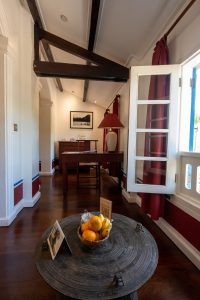
For future guests, a few pro tips can help enhance your stay. Room selection plays a key role in your experience at The Belle Rive. If you’re drawn to the stunning views of the Mekong River, opt for the Riverview rooms, where you can enjoy breathtaking sunsets from your own balcony. However, if you seek a quieter, more peaceful retreat, the Garden View rooms are an ideal choice, though they don’t have quite the same awe-inspiring views. For those wanting to experience the hotel’s rich architectural history, consider requesting a room in the heritage building for a closer look at the original design and character of the property.
When it comes to timing, planning your visit around the right season can make a big difference. The ideal months to visit are November through February, offering mild, pleasant weather perfect for exploring the town and surrounding areas. However, April presents a special opportunity to experience the Lao New Year festivities, though it’s important to note that it also brings intense heat. For a more serene experience, the sunset cruise is least crowded on Tuesdays, providing a peaceful way to unwind while taking in the river views.
There are also some secret perks that make a stay at The Belle Rive even more special. Each evening, guests are gifted a handmade bookmark during turndown service, a simple yet thoughtful touch that reflects the hotel’s attention to detail. If you’re planning to visit local temples, you’ll receive complimentary sarongs to ensure your visit is both respectful and comfortable. For those who want to enjoy a more private moment, there’s a hidden riverfront deck that’s perfect for intimate dining, offering a quiet, secluded atmosphere with a view of the Mekong River.
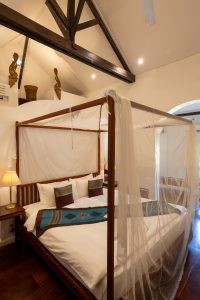
As my boat slowly pulled away on departure day, I found myself watching The Belle Rive fade into the backdrop of Luang Prabang’s riverscape. Its blue shutters and graceful presence seemed to blend seamlessly with the natural beauty around it, becoming just another brushstroke in the city’s ever-evolving living painting. That’s the magic of this place—it doesn’t feel like somewhere you’ve just visited; it feels like somewhere you’ve briefly belonged, a part of your journey that stays with you long after you’ve left.
In a thoughtful addition, the hotel now offers a Digital Detox Package for those looking to disconnect fully from the modern world. Guests can surrender their devices, which are lovingly stored in a handwoven basket, and instead are gifted with a vintage Leica film camera to capture memories the old-fashioned way. This unique experience encourages guests to embrace the world around them through all five senses, rather than through the lens of a screen. It’s a beautiful reminder that some places—like The Belle Rive—are meant to be experienced fully, immersing you in the sights, sounds, and feel of the destination without the distractions of technology.
